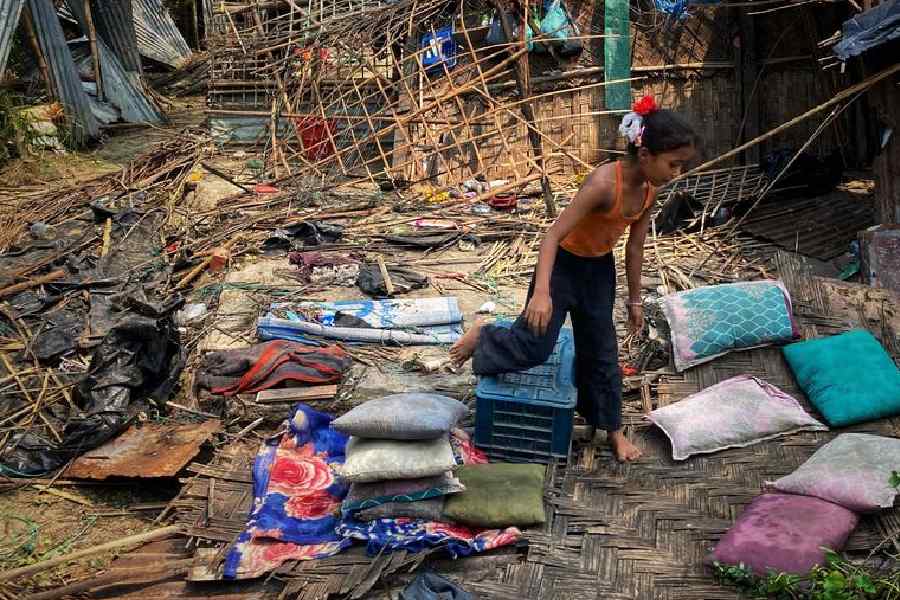Cyclone Mocha has killed 145 people in Myanmar — mostly from the persecuted Rohingya minority, the country's military junta said Friday.
Mocha made landfall on Sunday, and Myanmar's western Rakhine state suffered the most damage while parts of neighboring Bangladesh were also hit.
"Altogether 145 local people were killed during the cyclone," a statement from Myanmar junta authorities said, listing the victims as four soldiers, 24 locals and 117 "Bengalis" (a pejorative term for the Rohingya).
The situation in Rakhine state
The military government said media reports of up to 400 deaths were false, although it's not possible to independently verify either figure.
Local leaders based near the Rakhine state capital of Sittwe told Agence France-Presse that more than 200 Rohingya had died in their areas alone, with counting still ongoing.
Rakhine state is home to hundreds of thousands of Rohingya refugees who live in crowded displacement camps following decades of ethnic conflict in Myanmar. Their ramshackle homes on low-lying land were severely battered by a storm surge.
Rohingya have lived in Myanmar for generations but are widely viewed as interlopers from Bangladesh. They are denied citizenship, access to healthcare and require permission to travel outside of their townships.
Bangladesh, meanwhile, said no one had died on its side of the border, including in the sprawling Rohingya refugee camps on its territory that house almost a million people.
Aid efforts after Cyclone Mocha
Packing winds of 195 kilometers per hour (120 miles per hour), Mocha stormed across the Bay of Bengal last weekend, tearing down buildings and turning streets into rivers in both Myanmar and Bangladesh.
The cyclone, Myanmar's most destructive in at least a decade, brought widespread flash floods as well as communication and power outages.
The United Nations World Food Program said Friday that at least 800,000 people in Myanmar now need emergency food aid and other assistance following the cyclone.
Junta-backed media reported Friday that naval ships and the air force had brought in thousands of bags of rice, while thousands of electricians, firefighters and rescue workers were deployed across Rakhine.
Several nations, including India, Japan, Britain and the United States, have already promised aid.
Three Indian navy ships carrying food, tents, medicines, water pumps and sanitary and hygiene products reached Yangon, Myanmar's largest city on Thursday, and a fourth ship was to arrive Friday, New Delhi said.
The role of the military junta after the cyclone
After decades of persecution, a military crackdown in Myanmar in 2017 sent hundreds of thousands of Rohingya fleeing into neighboring Bangladesh, with harrowing stories emerging of murder, rape and arson.
The current military administration seized power in 2021 from the elected government of Aung San Suu Kyi and is engaged over much of the country in warfare against armed resistance forces opposed to military rule.
Before Mocha, Cyclone Nargis was the worst storm to hit Myanmar, devastating the Irrawaddy Delta in 2008 and killing at least 138,000 people.
A previous military government was harshly criticized after it delayed the acceptance of outside aid following Nargis.
Local officials have said there are no curbs on local or international organizations sending aid this time, but those comments cannot be independently confirmed.










